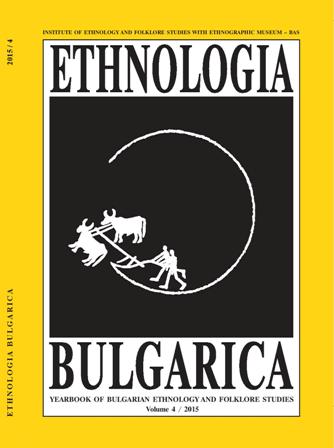
We kindly inform you that, as long as the subject affiliation of our 300.000+ articles is in progress, you might get unsufficient or no results on your third level or second level search. In this case, please broaden your search criteria.

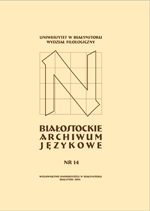
Currently in Russia, due to the change in the political system, there is more and more noticeable impact of the Orthodox Church on the life and language of the Russians. Biblical phraseology begins to permanently enter into the realm of contemporary Russian culture. It became common among the Orthodox Russians to cite the idiomatic expressions and quotations from the Bible. In the modern language of the Orthodox Christians the meanings of idiomatic units coincide with their meanings in the texts of Scripture, which, however, is not always synonymous with the dictionary meaning.
More...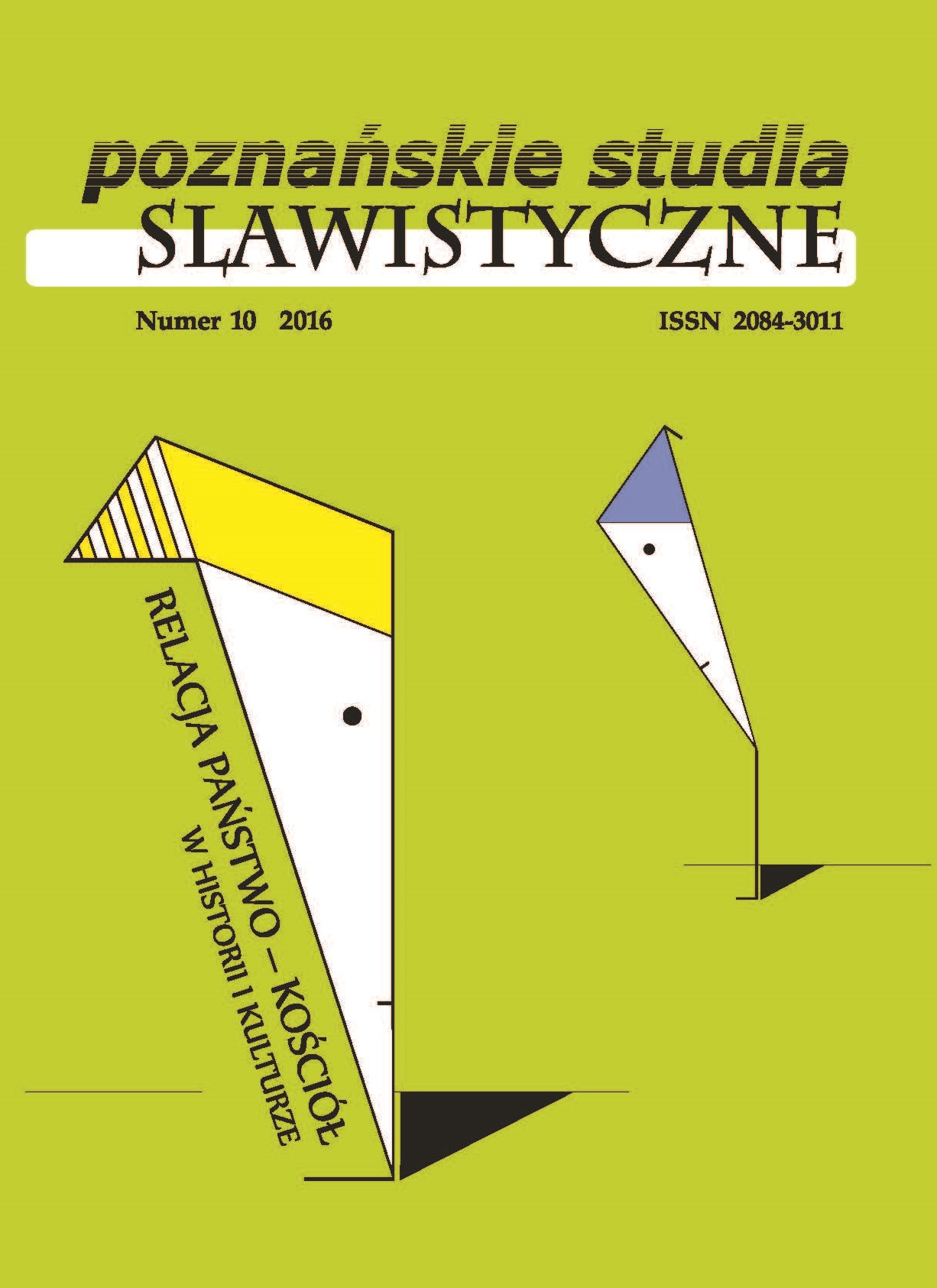
In Serbia, in the aftermath of 5 October 2000, the process of desecularization, including the revitalization of the Serbian Orthodox Church (SOC), overlapped with the democratization of itspolitical institutions, as well as with the political and social pluralism. The desecularization of theSerbian society had already started in the socialist Yugoslavia, but the process itself intensified inthe early period of political pluralism and establishment of the democratic political institutions. IsOrthodoxy compatible with democracy, viewed not only as the will of the majority or an electionprocedure, but also as a political culture of pluralism and rule of law? Is Orthodoxy possible asa “civic” church, in line with the European political tradition of democracy and pluralism? Theauthor contends that the contemporary Orthodoxy, including the SOC, accepts globalization inits technical, technological and economic sense, with a parallel tendency towards cultural fragmentation. Thus one needs a consensus between the SOC, state and society in Serbia concerningthe basic values, such as: democracy, civil society, pluralistic discourse, secular tolerance andindividual human rights.
More...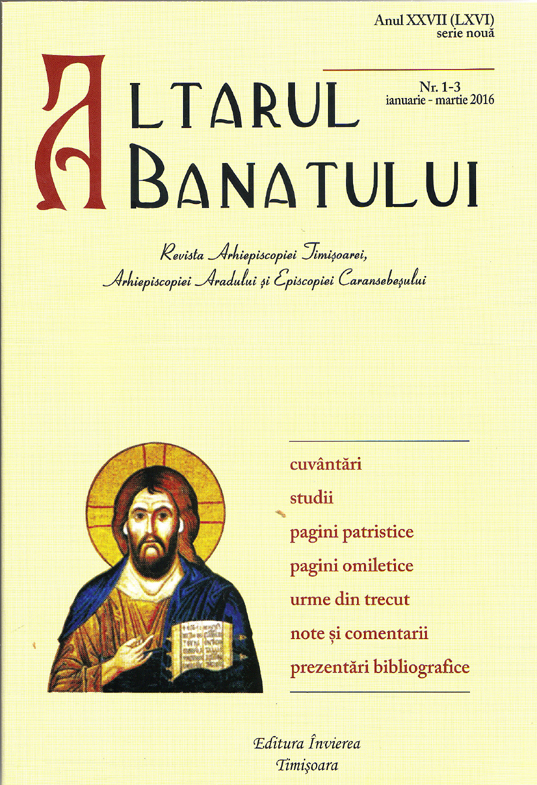
“Ilarion V. Felea” Orthodox Theology Faculty of the “Aurel Vlaicu” University in Arad concluded the year 2015 with a series of academic, spiritual and social events that emphasize the intense involvement of teachers and students in the process of shaping the theological future of priesthood, as well as social-cultural activities, which increases this institution’s contribution to promoting values of the Church not only locally and nationally, but also beyond the country’s borders. In structuring this material, we have managed to gather all own information published in the written and online media (especially websites such as: Basilica and the website of the Archbishopric of Arad, Lumina and Calea Mântuirii publications), laid out in chronological order, resembling an „institutional logbook”.
More...
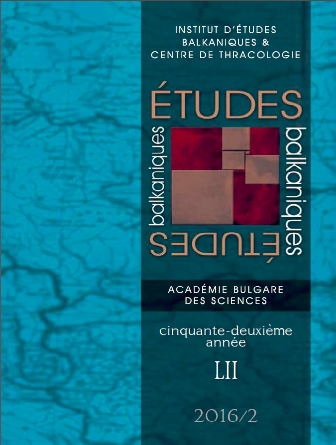
The Bulgarian schism from 1872 is considered the focal point in the synthesis between secularization and nationalization of the religious life of the Orthodox Christians in the modernizing 19th century Balkans. The Bulgarian separation from the Patriarchate of Constantinople was not a precedent in the context of the epoch. Quite similar were the administrative church disunions, common for most of the emerging nationalistic movements in Eastern Europe. But it was only the Bulgarian case in which a whole nation was proclaimed schismatic and excommunicated from the Orthodox ecumene. What is more, it was for the promulgation of the autocephaly of the Bulgarian Exarchate that the nationalism within the Church (ethnophyletism) was declared heresy. That exclusiveness of the Bulgarian case makes it a rather convenient resource for historical, theological and sociological arguments in the ongoing scientific debates, concerning the modern relationships between church, state and society and especially for the explanation of some conflict crossroads within the modern Orthodox world. Apart from the academic discourse, in the past two decades the Bulgarian schism from 1872 is actively being used, both by local and foreign thinkers, as a ground for predefinition of the popular grand narratives in the Bulgarian history. To the intensity and the reasons for that rethinking of the historical discourse, which could be quite radical in some cases, is devoted the following research.
More...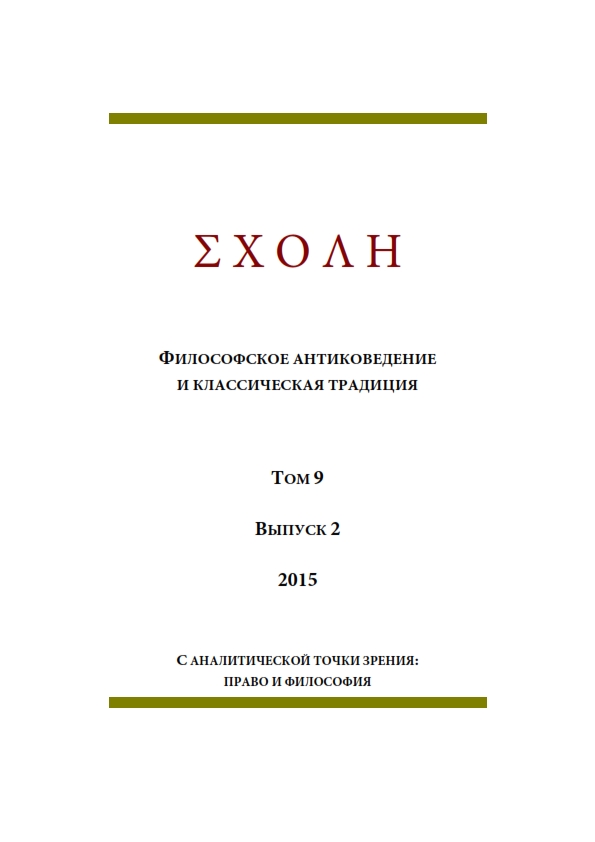
The Greek word ‘schesis’ in the works of Gregory Nazianzen has generally been translated as ‘relation’ and interpreted as a programmatic term for his doctrine of Trinitarian relations. Although this may be a valid interpretation of the terminology of other 4th century theologians, this is not true of Gregory. His usage of the word ‘schesis’ does not correspond with the traditional Aristotelian or Stoic ways of designating a relation. It denotes a status or a disposition, it may even mean a place in a relation, but it is not the relation itself, and not a disposition towards another. Therefore all the interpretations of Gregory’s teaching on the Trinitarian relations are to be revisited and reformulated more carefully, keeping in mind the peculiarity of his usage of ‘schesis.’
More...
The article discusses the wide range of questions, connected with specificity of religious consciousness of Russian intelligentsia in the beginning of the 20th century. Russian religious consciousness reflects both western and eastern beginnings; Russian culture also incorporates rationalistic and Christian traditions. Revealed is the ambiguity of intellectuals' perception of progressive development ideals.
More...
On the basis of the methodology of the traditionalist school the author analyzes the religious component of Sakhalin mentality. The confessions, composing the spiritual field of Sakhalin region, for convenience can be divided into traditional, traditionally-oriented and innovatory (in their turn they can be divided into modernist and post-modernist). The traditional confessions realize mental penetration into the living environment. The modernist ones, on the other hand, have a propensity to escaping from this penetration; the post-modernist confessions move to the virtual space rich in an illusory semiotic content substituting the ontological analogs. The Sakhalin religious organizations are approximately divided into these categories. On the base of this classification, generalizing his own experience of theoretical and practical studies, the author builds a specific vision of Sakhalin mentality and concludes about the spiritual condition and the possibilities of the future development of Sakhalin.
More...
The article attempts to outline the specific language of Soviet historical science based on the example of Soviet historiography of antiquity. We emphasize the importance of scientific research in the field stated, and propose an interpretation of the language of historiography concept. The main part of the article describes the two main characteristics of the language of Soviet historical science: the elevation of all meanings to an absolute truth and the focus on orthodoxy; the relationship and interaction between these characteristics are shown. We also reveal specific “fears” of Soviet historiography, which were reflected in its language.
More...
The paper analyses the narrative subject of pilgrimage (orthodox) essay. The pilgrimage tradition has influenced the essence of this type of essay, which is reflected in the genre-forming features and information tasks. The study examines the contemporary essays published by orthodox media over the recent 15 years. The most characteristic features of pilgrimage essay are revealed.
More...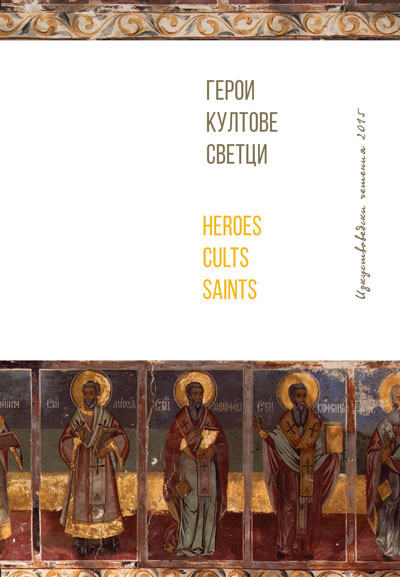
The church murals of the period of Bulgarian National Revival include inevitably in the tier of the standing saints representations of SS Cyril and Methodius, among the Slavic holy hierarchs. An extraordinary in terms of its scope phenomenon of the age was the mass painting of their images together on icons and murals. Each church either commissioned or was presented with several at times icons of the holy brothers or icon-painters rendered their representations. The shaping of the representations of SS Cyril and Methodius in a joint composition, evincing certain attributes, could be explained not only by the rapid and ubiquitous establishing of a jointly celebrated feast day of the two saints. This composition was predicated on literary sources rather than on repetition and copying of medieval models. It highlighted their isoapostolic contribution to the cause. In the late nineteenth and the early twentieth centuries, a team of icon-painters from Bansko worked in the southwestern parts of Bulgaria: Michalko Uvanov Golev and Dimiter Sirleshtov, who painted 11 churches in the regions of Blagoevgrad and Kyustendil. SS Cyril and Methodius are painted at the churches of The Presentation of the Most Holy Mother of God into the Temple, Blagoevgrad (1882–1889); of St John the Baptist, village of Bistritsa/Dubova Neighbourhood (1882–1883); St Elijah the Prophet, village of Selishte(1888–1889); St Michael the Archangel, village of Leshko (1889); The Holy Ascension, village of Pokrovnik (1891–1901); St Demetrius, village of Drenkovo (1892–1893); St Demetrius, village of Marulevo (1893); St Michael the Archangel, village of Logodash (1896–1898); SS Peter and Paul, village of Palat, region of Blagoevgrad (1909–1910). The representations of SS Cyril and Methodius by Michalko Golev and Dimiter Sirleshtov demonstrate the various types of compositions they have used, including the representations of the holy brother in the altar apse. Moreover, they show also the committed attitude towards the personalities of the holy brothers, typical not only of the two icon-painters, but also of the rest of the icon-painters from the region, who stood for their national identity until 1912.
More...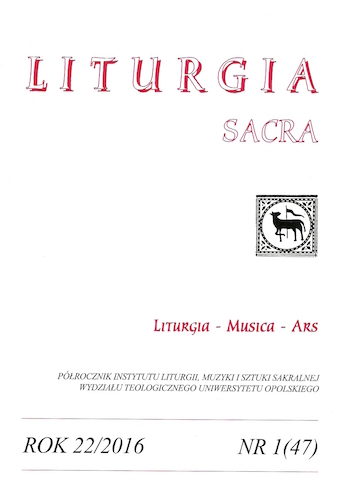
Since the proclamation of the word of God is an important element of the liturgical celebration, the Mass Lectionary is considered one of the chief liturgical books. The paper consists of three parts in which it attempts to show the genesis of lectionaries. The first part shows the history of the development of lectionaries. At first, the word of God celebrated during the liturgy was read from the Bible. With time, sets of Gospel periscopes, and later lectionaries, were created. Euchological readings and texts were also combined in one book. The second part of the paper describes the work of the Committee for the Implementation of the Second Vatican Council’s Reform. The Committee’s task was to divide a Missal into two books, namely a sacramentary and a lectionary. The article also presents the Committee’s work on the choice of pericopes which were to be included in the Roman version of the Mass Lectionary, as well as efforts to create the first Polish edition of the Mass Lectionary, the task commissioned by Primate Wyszyński. The final part of the paper shows the works on the second edition of the Mass Lectionary. In addition to a new, extended introduction, a series of alterations have been made in the lectionary. The passages in the Mass Lectionary come from Biblia Tysiąclecia (5th edition). The language of the readings has been revised and updated, and a new spelling of religious vocabulary words has been included. Some acclamations and responsorial psalms have also been changed. The second edition of the Mass Lectionary has been adopted to the Ordo Lectionum Missae guidelines of 1981.
More...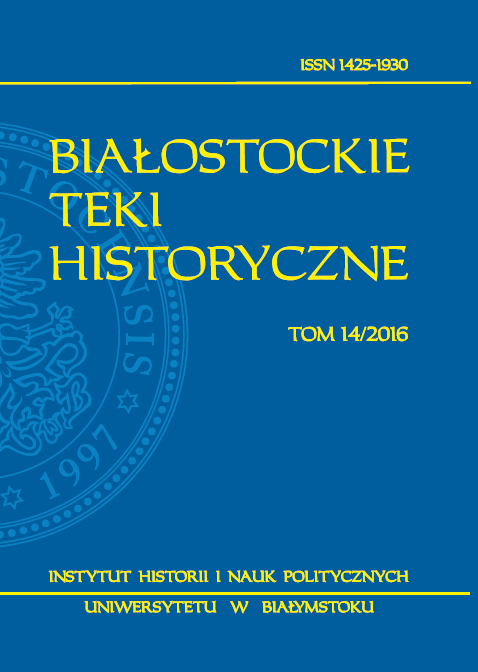
The society of the Commonwealth was always characterized – to a greater or lesser degree – by a diversified religious and national structure. The problem with a society with different religious characteristics had appeared on a large scale already in the 14th century, when ethnically non-Polish people could be found within the borders of the Commonwealth. In the 14th century the Kingdom of Poland lost extensive ethnically Polish areas in the West. The religious and ethnic structure of the state changed due to the incorporation of Red Ruthenia by Casimir III the Great (Kazimierz Wielki). Casimir III the Great – the last representative of the Piast dynasty – understood the importance of the problem connected with the presence of Orthodox Church members within state borders. The king preserved the rights and rites of the Orthodox Church. Political relations between the grand Duchy of Lithuania and Catholic Poland had religious repercussions. It curbed the development of the Orthodox religion and paved the way for the Latin Church – with all the political and cultural consequences. The Orthodox religion changed from the dominating position to a tolerated one. Yet the Jagiellonians understood that Orthodox people inhabited their own – in an ethnic sense – territories. The Jagiellonians, as opposed to the Angevin (Andegawenowie) or the House of Valois (Walezjusze), built their power on the multireligious structure of the Grand Duchy of Lithuania. They did not intend to follow the western model of a single religion Roman Catholic state, with one dominating Latin culture. Their stand resulted from the ethnic structure of the Grand Duchy of Lithuania. During the Jagiellonian dynasty, the Orthodox religion became a national and folk denomination, through the omnipresence of various forms of cult and rites. The power of the Commonwealth was based on its recognition by the Orthodox Ruthenian population of the Crown and the Grand Duchy of Lithuania as their own state. Good multireligious and multicultural cohabitation was shaken by the 1596 Union of Brest (Unia Brzeska). The Union of Brest undermined the main element of Ruthenian culture, based on its spiritual unity with Byzantium. A medial element, situated between the two traditions, was added to the existing Catholic-Orthodox model. The Union’s initiators were mistaken in their beliefs that its attractiveness would move Ruthenians from the Orthodox Church. Despite this tendency, the fall of Orthodox culture did not take place; on the contrary, it developed in new forms, which were more adequate to 17th century’s reality. Consequently, the Union of Brest did not turn against the Orthodox Church assuch, but the Orthodox Church in the Commonwealth. The Union of Brest was in some aspects beneficial for the Roman Catholic Church, yet it did not solve any of the internal problems of the state. In Poland the distance between Polish elites and Ruthenian culture increased. A Protestant, brought up in western culture, was closer to a Catholic than a Ruthenian following Byzantine traditions, though increasingly more and more immersed in Polish culture.
More...
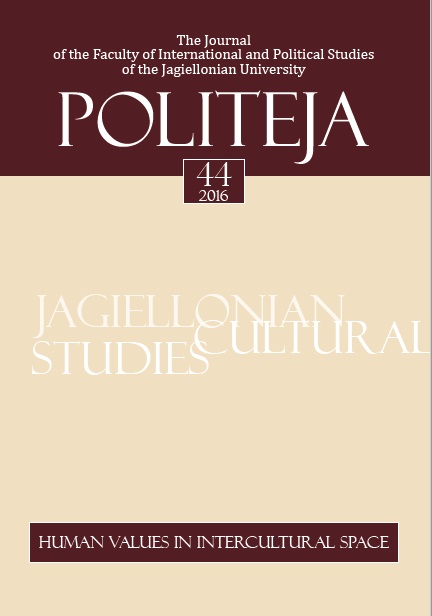
The main focus of interest in the paper is the attitude of Western and Eastern stems of Christianity towards religious painting with reference to the problem of equality of word and image as far as the Church teaching is concerned. The roots and basic notions of Christian anthropology as well as positions revealed by both Churches during the discussions in 7-8th centuries are regarded as foundations for noticeable differences in interpretations of meanings, means, artistic principles, reality representations, ways of passing on the truth on man in Orthodox icons and Western religious paintings either. Taking in to account the relationship between object and its representation the paper develops the idea of metonymical principle being crucial for Western religious paintings and symbolic connection between signans belonging to the earthly reality and signatum pointing out to transcendent realm in Orthodox icon painting.
More...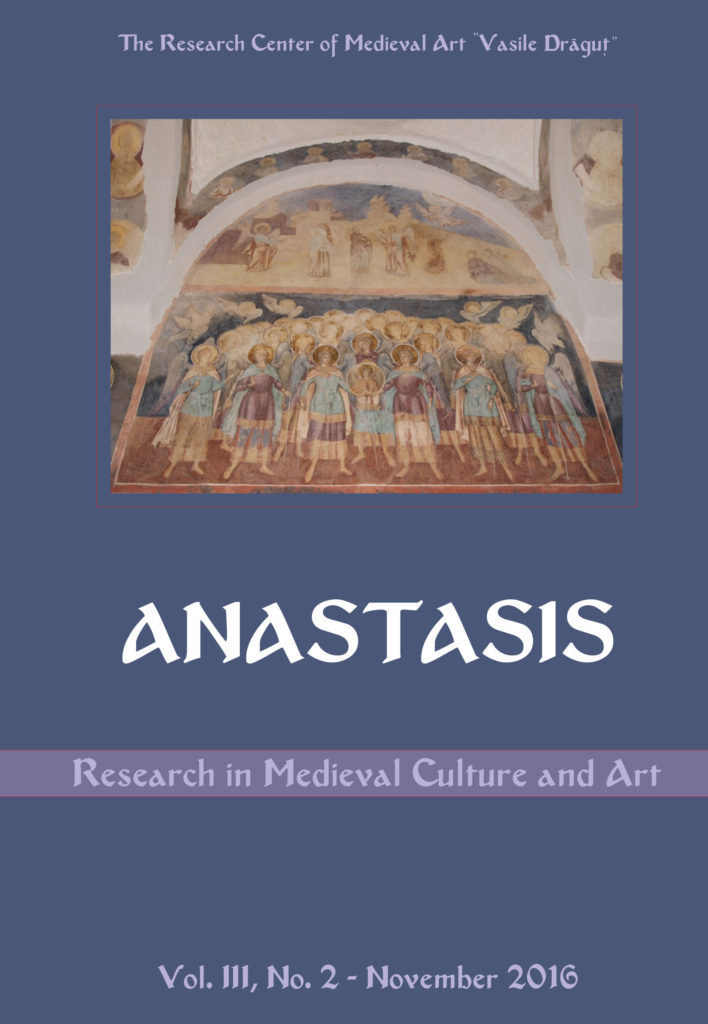
Being remarkablethrough the monumentality andelegance of proportions, thearchitecture of the Church “SaintJohn the Baptist” from Bârnovaderives from the so-called oldWallachian style, skillfullyreshaping a structure whichcombines elements which arespecific to Byzantine Balkanicecclesiastical buildings. Theunseen pictural work of ȘtefanConstantinescu is characterized bythe attempt to associate the resultsof experiencing freedom ofinterpretation and expression withthe rules of the iconographiccanon, inside the same ensemble.Its representations do notreproduce the traditional Byzantinemanner, nor it is delivered as aform of quoting reality, but it is filtered and interpreted. From a theologicalpoint of view, the author respects the iconographic program, except for thetopographic placement of some episodes, adapting the discourse accordingto the configuration and features of the liturgical space. We are in front ofa case which places us in the position of managing the relationship betweenthe value of artistic creation and the meticulosity of theologicalinvolvement. Neither Byzantine, nor realistic, the artistic solution of themural painting from Bârnova is closer to the manner of iconictransfiguration than to the one of improvisation or artistic intermediationthrough which the daily tridimensional world is reflected.
More...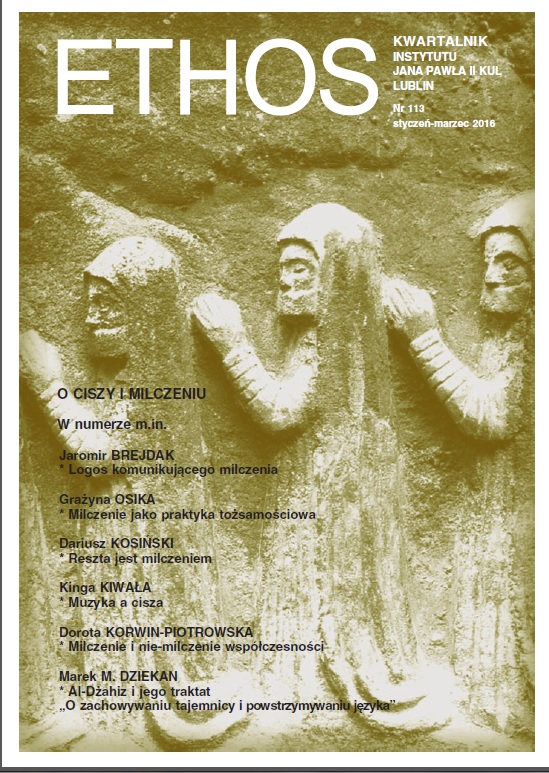
In the liturgical experience, Christ the Lord is the light which illumines the way and reveals the transparency of the cosmos, precisely as in Scripture. The events of the past find in Christ their meaning and fullness, and creation is revealed for what it is: a complex whole which finds its perfection, its purpose in the liturgy alone. This is why the liturgy is heaven on earth, and in it the Word who became flesh imbues matter with a saving potential which is fully manifest in the sacraments: there, creation communicates to each individual the power conferred on it by Christ. Thus the Lord, immersed in the Jordan, transmits to the waters a power which enables them to become the bath of baptismal rebirth.4 Within this framework, liturgical prayer in the East shows a great aptitude for involving the human person in his or her totality: the mystery is sung in the loftiness of its content, but also in the warmth of the sentiments it awakens in the heart of redeemed humanity. In the sacred act, even bodiliness is summoned to praise, and beauty, which in the East is one of the best loved names expressing the divine harmony and the model of humanity transfigured, appears everywhere: in the shape of the church, in the sounds, in the colors, in the lights, in the scents. The lengthy duration of the celebrations, the repeated invocations, everything expresses gradual identification with the mystery celebrated with one’s whole person. Thus the prayer of the Church already becomes participation in the heavenly liturgy, an anticipation of the final beatitude.
More...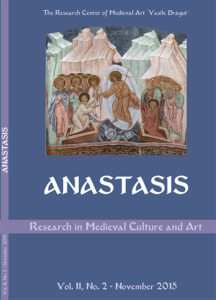
This study aims to discover the literary sources of the quotations painted on the phylacteries of the saints on the bottom row of the regarding the façade of the Church of the Resurrection of Christ of Suceviţa Monastery. This study is part of a series regarding the sayings of the fathers from the desert, the confessors, the anchorites and the stylites painted on the southern façade of the Church of The Annunciation of the Virgin from Moldoviţa . The author of the study shows that the quotes from Suceviţa are largely drawn from the Alphabetical Collection of the Sentences of the Fathers of the Desert.
More...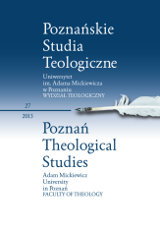
Międzynarodowa Komisja Wspólna ds. Dialogu między Kościołem Rzymskokatolickima Cerkwią Prawosławną prowadzi dialog poświęcony prymatowi papieskiemu. Aktualny stan dia-logu na temat prymatu oddaje dokument z Rawenny: Ecclesiological and Canonical Consequencesof the Sacramenta! Nature of the Church. Ecclesia! Communion, Conciliarity and Authority. Sobo-rowość i prymat w Kościele znajdują najgłębsze uzasadnienie w najważniejszym chrześcijańskimdogmacie o Trójcy Świętej. Dla teologii wschodniej i zachodniej Kościół jest bowiem ikoną TrójcyŚwiętej. Dlatego też refleksja nad nim musi wychodzić od dogmatu o Trójcy Świętej. Na doku-ment z Rawenny trzeba spojrzeć w świetle wschodniego modelu Trójcy Świętej. Według niegowśród równych sobie osób boskich osoba Ojca jest proms. Dwie pozostałe osoby są określanew kontekście ich związku z Ojcem: Syn został zrodzony przez Ojca, Duch od Ojca pochodzi. Sko-ro Kościół jest obrazem boskich osób, z których pierwsza jest protos, to musi w nim być miejscena owo protos. Jednak w Trójcy Świętej wszystkie trzy osoby działają razem i jest w Nim coś, cokoresponduje z pojęciem „soborowość”. Skoro więc Kościół jest obrazem konsyliamego Boga, todo jego istoty należy również soborowość. Kościół będący ikoną Trójcy Świętej musi być równo-cześnie Kościołem soborowym i Kościołem mającym protos. Soborowość i protos muszą być wi-doczne na wszystkich płaszczyznach Kościoła: lokalnej, regionalnej i uniwersalnej. Na płaszczyź-nie uniwersalnej jest mtem miejsce na prymat Biskupa Rzymu, który powinien być jednak zrein-terpretowany w duchu starożytnego Kościoła. Reinterpretacja prymatu biskupa Rzymu mogłaby siędokonać analogicznie do korekty materii sakramentu święceń dokonanej przez Piusa XII w Sacra-mentum ordinis z 1947 roku. Sobór we Florencji w Dekrecie dla Ormian z 1439 roku określił, żeistotnym elementem udzielania święceń jest podanie kielicha z winem i pateny z chlebem.
More...